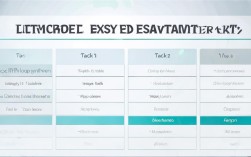雅思大作文标题的主要类型
主要分为以下四大类,理解它们的区别至关重要。

议论文
这是最常见、最核心的类型,题目会给出一个观点、问题或现象,要求你进行讨论和分析,它又可以细分为两种:
a) 双边讨论
- 特点:题目通常会给出两个对立的观点,要求你讨论并给出你自己的看法。
Discuss both views and give your own opinion.,Discuss both sides and give your own opinion.- 写作策略:
- 结构:四段式或五段式。
- 主体段1:论述第一个观点,并给出理由和例子。
- 主体段2:论述第二个观点,并给出理由和例子。
- 结尾段:总结双方观点,并清晰地阐述你自己的立场。
- 示例:
Some people believe that unpaid community service should be a compulsory part of high school programmes (e.g. working for a charity, improving the neighbourhood or teaching sports to younger children). To what extent do you agree or disagree? (注意:这个标题虽然问“to what extent do you agree or disagree”,但它本质上是一个双边讨论题,因为它隐含了“支持”和“反对”两个阵营。)
b) 单边论证
- 特点:题目通常给出一个明确的观点或建议,要求你明确表示支持或反对。
To what extent do you agree or disagree?,Do you agree or disagree?,What is your opinion?- 写作策略:
- 结构:四段式。
- 开头段:明确表明你的立场(同意/不同意)。
- 主体段1 & 2:分别从两个不同角度提供理由和例子来支撑你的立场,即使不完全同意,也要论述你同意的部分,然后再转折论述不同意的部分(
partly agree/disagree)。 - 结尾段:重申你的观点。
- 示例:
Some people think that governments should give financial support to creative artists such as painters and musicians. Others believe that they should get financial support from other sources. Discuss both views and give your own opinion. (这是一个典型的双边讨论题)
利弊分析
- 特点:题目要求你分析某个事物、现象或政策的优点和缺点。
Do the advantages outweigh the disadvantages?,What are the advantages and disadvantages?- 写作策略:
- 结构:四段式或五段式。
- 主体段1:论述优点,并给出理由和例子。
- 主体段2:论述缺点,并给出理由和例子。
- 结尾段:
- 如果题目问
Do the advantages outweigh the disadvantages?,你需要给出一个明确的判断(On the whole, the benefits of... outweigh its drawbacks.)。 - 如果题目只问
What are the advantages and disadvantages?,你只需要在结尾总结一下即可,不需要给出明确的选择。
- 如果题目问
- 示例:
In some countries, the average weight of people is increasing and their levels of health and fitness are decreasing. What do you think are the causes of these problems and what measures could be taken to solve them? (这是一个问题解决型题目,但分析原因和措施时,常常会涉及到利弊分析的思路。)
问题解决型
- 特点:题目描述一个问题,要求你分析其原因并提出相应的解决方案。
What are the causes of this problem and what solutions can you suggest?,What are the reasons for this phenomenon and what can be done about it?- 写作策略:
- 结构:四段式或五段式。
- 主体段1:分析问题的原因(可以是一个或多个)。
- 主体段2:提出解决方案(可以是一个或多个)。
- 结尾段:总结原因和方案,并可以展望未来。
- 示例:
Many people believe that international tourism has harmful effects. Why do they think so? What can be done to change this situation?
混合型
- 特点:题目结合了以上两种或多种要求,比如既要求讨论观点,又要求分析原因。
- 写作策略:仔细拆解题目要求,确保在文章中回应所有问题,通常主体段需要分段处理不同要求。
- 示例:
Some people think that the government should provide free education for all. To what extent do you agree with this statement? What are the advantages and disadvantages of free education? (这个题目要求你:1. 表明对“政府应提供免费教育”这一观点的立场;2. 分析免费教育的优缺点。)
审题三步法(非常重要!)
后,不要急于动笔,请遵循以下三步,确保万无一失。
第一步:划出核心词中描述“主体”和“任务”的词。
- 主体:讨论的对象是什么?(e.g.,
technology,university education,government policy) - 任务:要求你做什么?(e.g.,
discuss,agree/disagree,advantages/disadvantages)
第二步:识别限定词 这些词限定了讨论的范围,决定了你的论证方向。
- 时间/地点限定:
in the past,nowadays,in developed countries,in some cultures - 程度限定:
some people,many people,a few,completely,partially - 特定方面:
economic,social,environmental,personal,psychological
第三步:确定你的立场 根据审题结果,明确你要写什么类型的文章,并构思你的核心论点。
- 如果是双边讨论,你的观点是什么?
- 如果是单边论证,你同意还是不同意?
- 如果是利弊分析,优点和缺点分别是什么?优点是否大于缺点?
- 如果是问题解决型,原因是什么?方案是什么?
常见标题示例与解析
示例 1 (双边讨论)
Some people think that the government should invest money in public services (e.g., healthcare and education) rather than in the arts (e.g., music and painting). To what extent do you agree or disagree?
解析:
- 核心词:
government invest,public services (healthcare & education),arts (music & painting),To what extent do you agree or disagree?- 任务:单边论证(虽然问 extent,但更偏向单边)。
- 审题:题目要求你讨论政府投资应该优先给公共服务还是艺术,你需要明确你的立场(同意、不同意或部分同意),并提供理由。
- 思路:
- 立场:部分同意,政府应优先保障基本公共服务,但艺术投资也至关重要。
- 主体段1 (同意投资公共服务):理由 - 关乎民生基础、社会稳定、人力资本,例子 - 公共医疗体系能提高国民健康水平,教育投资能培养未来人才。
- 主体段2 (也投资艺术):理由 - 艺术能提升国民文化素养、促进旅游业发展、创造就业,例子 - 博物馆、音乐节带来的经济效益和文化软实力。
- 强调两者并非完全对立,应寻求平衡。
示例 2 (利弊分析)
In many countries, people are moving to live and work in cities. What are the advantages and disadvantages of this trend?
解析:
- 核心词:
moving to live and work in cities,advantages and disadvantages- 任务:利弊分析。
- 审题:题目要求你分析“城市化”这一趋势的利弊。
- 思路:
- 主体段1 (优点):
- 更多就业机会:城市是商业和工业中心。
- 更好的基础设施:交通、医疗、教育资源更丰富。
- 更丰富的文化生活:有更多的娱乐和社交活动。
- 主体段2 (缺点):
- 生活成本高:尤其是房价和租金。
- 环境污染和交通拥堵:空气污染、噪音、通勤










